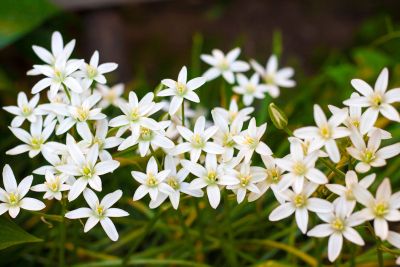Weed control for star of Bethlehem is only necessary if the plant is rampant and uncontrollable in unwanted spaces. This is especially true when you find star of Bethlehem in lawns.
About Star of Bethlehem Weeds
While star of Bethlehem produces very pretty flowers, all parts of the plant are poisonous. It is an escaped foreigner and spreads prolifically. This makes control of this flower important, especially in counties where the plant has become a nuisance. Star of Bethlehem in grass is the most difficult to eradicate. There are, however, some tips on removal that can make weed control for star of Bethlehem easier. The plant primarily grows from bulbs, which naturalize over time and produce more plants. In just a few years, a couple of plants can take over an area. This is fine if you enjoy the short-lived starry flowers and aren’t worried about the plant taking over your garden. However, in most cases, weed control is necessary and desired. The plant resembles wild allium but without the onion scent when crushed. The leaves are narrow, shiny, grass-like, and have a white midrib.
Bethlehem Flower Control
Numerous experimental trials have been conducted on the use of chemicals on star of Bethlehem. Products with paraquat seem to be 90 percent effective in garden beds. Use protective clothing and read all accompanying instructions. If you have this “weed” in your grass, it can be harder to control. When in lawns it should be mowed prior to chemical application. This will open the cuticle and allow penetration. Products with formulas comprised of 2,4-D, glyphosate, sulfentrazone, and carfentrazone will knock down the foliage but bulbs persist. A secondary application will be necessary. In garden beds, digging the plant out and destroying it is practical, provided you can find all the new bulblets. Manual removal will also result in the need to repeat the process over and over. However, it has been shown to achieve better control than chemical applications. Plus, it does not leave any potentially harmful chemicals in your soil or water table. Be careful how you dispose of the bulbs. The greens can go in your compost, but do not add the bulbs, as they could sprout. Dry them in the sun and add to your community green recycle or throw them out. Note: Any recommendations pertaining to the use of chemicals are for informational purposes only. Specific brand names or commercial products or services does not imply endorsement. Chemical control should only be used as a last resort, as organic approaches are safer and more environmentally friendly.
